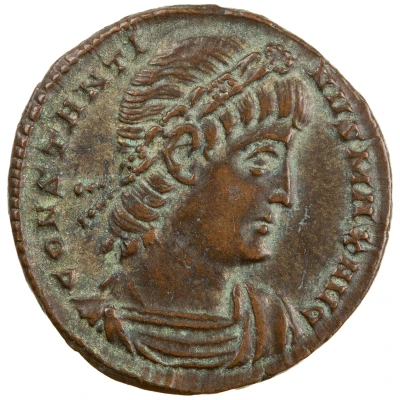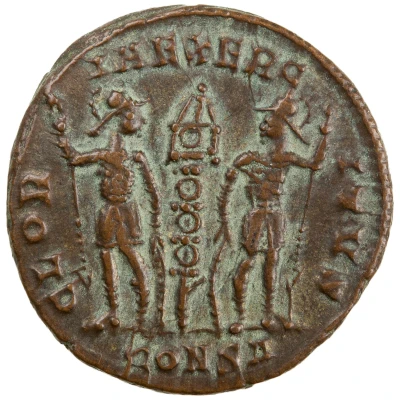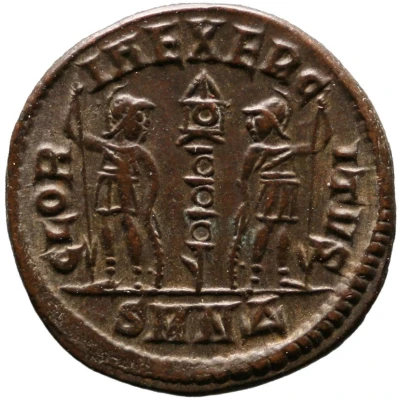


© jakefromstatefarm (CC BY-SA)
Nummus - Constantinus I GLORIA EXERCITVS; One standard; Heraclea
| Bronze | 1.63 g | 15.78 mm |
| Issuer | Rome › Roman Empire (27 BC - 395 AD) |
|---|---|
| Emperor | Constantine I (Flavius Valerius Constantinus) (306-337) |
| Type | Standard circulation coin |
| Years | 336-337 |
| Value | Follis (1⁄180) |
| Currency | Solidus, Reform of Constantine (AD 310/324 – 395) |
| Composition | Bronze |
| Weight | 1.63 g |
| Diameter | 15.78 mm |
| Shape | Round (irregular) |
| Technique | Hammered |
| Orientation | Medal alignment ↑↑ |
| Demonetized | Yes |
| Updated | 2024-10-04 |
| Numista | N#382371 |
|---|---|
| Rarity index | 95% |
Reverse
Two soldiers, helmeted, draped, cuirassed, standing facing each other, each holding spear in outer hand and resting inner hand on shield; between them, a standard.
Script: Latin
Lettering: GLORIA EXERCITVS
Unabridged legend: Gloria Exercitus
Translation: Glory of the Army
Edge
Plain
Interesting fact
The Nummus - Constantinus I coin was part of a large-scale currency reform implemented by Emperor Constantine the Great in the early 4th century AD. The reform aimed to stabilize the Roman Empire's economy and simplify its currency system, which had become complex and confusing due to previous emperors' policies. The Nummus coin was introduced as a new standardized currency, replacing the older and more varied denominations. It was made of bronze and had a uniform weight and design, featuring the emperor's image on one side and a military theme on the other, such as the GLORIA EXERCITVS (Glory of the Army) inscription seen on this particular coin. This coin is a testament to Constantine's efforts to centralize and strengthen the Roman Empire's economy, which ultimately contributed to its longevity and influence in the centuries to come.



